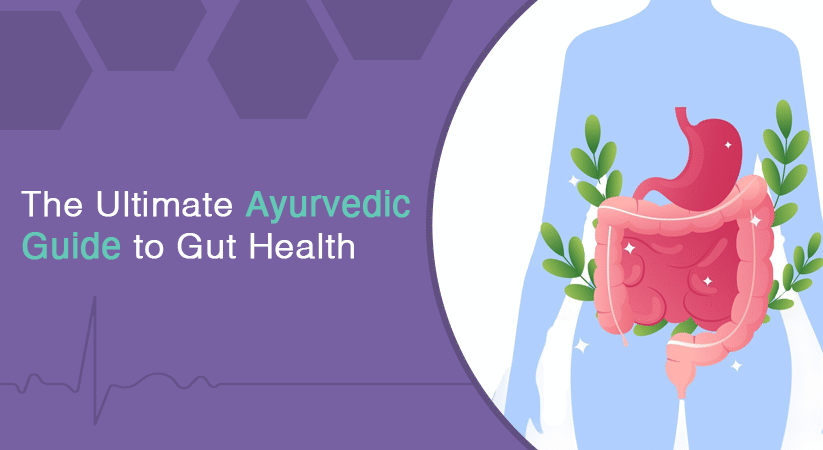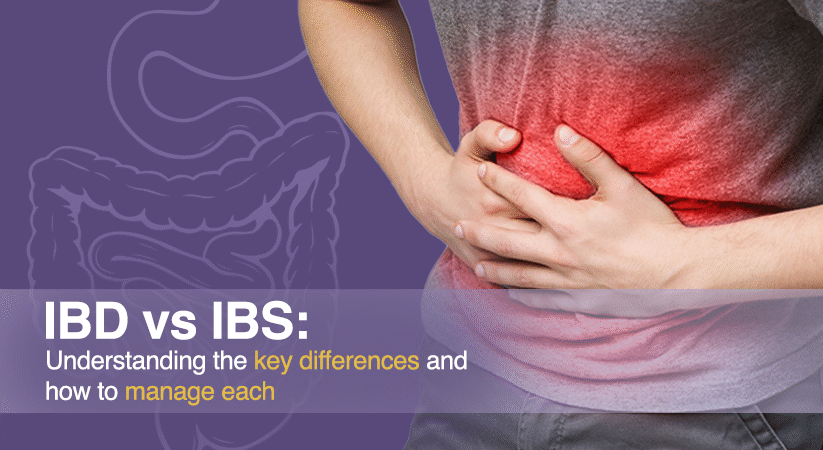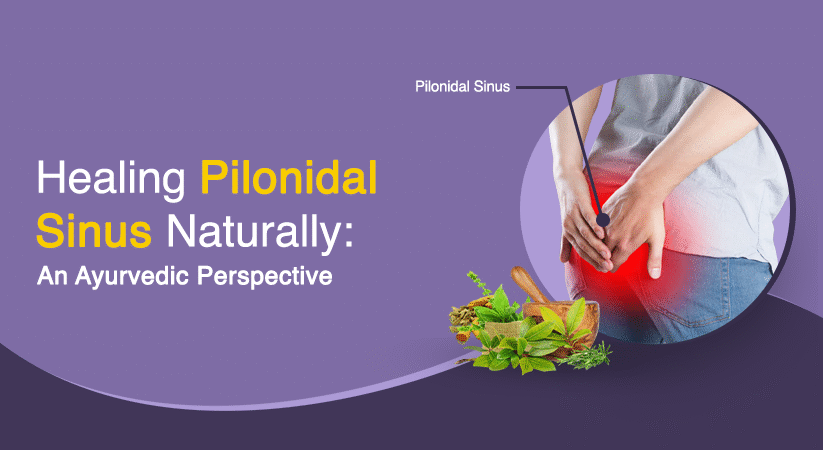By Chirag Global Hospitals

Introduction: Why Ayurveda for Gut Health?
Gut health is central, not only to digestion but also to immunity, mood, and energy. Modern science on the microbiome confirms what Ayurveda has taught us for more than 5,000 years: a robust digestive foundation supports overall well-being. Ayurveda presents a customised, tried-and-true path to cultivate this foundation.
From fermented foods to probiotic yoghurt, contemporary wellness is centred around gut care. Ayurveda augments this by integrating diet, lifestyle, and herbal knowledge in a way that balances an individual’s constitution and Agni (digestive fire), providing a holistic, long-term integration.
Early Ayurvedic texts point out that disturbed digestion causes Ama, toxins created out of undigested food that build up and start disease throughout the body. This finds its parallel in modern ideas surrounding leaky gut and systemic inflammation.
The digestive tract, sometimes referred to as the “second brain,” harbours both immune cells as well as neurotransmitter precursors. Ayurveda associates digestive functioning with emotional balance: when Agni is healthy and Ama is eliminated, mind health follows.
Core Ayurvedic Concepts
Gut health, as defined by Ayurveda, is centred around the following concepts:
Agni (Digestive Fire)
Agni is the energetic metabolic force that converts food to energy, tissue, immunity (Ojas), and mental acuity. It is in charge of digestion (AharaPaka), assimilation (DhatuPaka), absorption (Pachana), and elimination of waste (Malapaka)
When Agni weakens, Ama, the gluey toxins, accumulate, clogging body channels and causing disease. Knowing your Agni type is key to selecting food, herbs, and routines that restore balance.
Ayurveda divides Agni into four main categories:
- Sama Agni (balanced) – regular appetite, smooth digestion, regular elimination.
- Vishama Agni (irregular) – unpredictable digestion, bloating, and colic are associated with Vata imbalance.
- Tikshna Agni (sharp) – strong hunger, heartburn, Pitta-type inflammation.
- Manda Agni (sluggish) – heavy, slow digestion, Kapha-related heaviness.
Doshas & Gut Imbalances
The doshas – Vata, Pitta, and Kapha are dynamic forces that influence digestion, metabolism, and elimination. Each dosha forms Agni, and the imbalance thereof directly disrupts digestion and forms Ama.
- Vata: Characteristics include light, mobile, and cool. An imbalance of Vata leads to irregular appetite, gas, bloating, constipation, and emotional imbalance.
- Pitta: Characteristics include hot and sharp. Pitta imbalance causes acidity, heartburn, inflammation, diarrhoea, and irritability.
- Kapha: Characteristics are heavy and steady. Kapha imbalance is the reason behind slow digestion, lethargy, mucus, and weight gain.
Ama: The Root of Digestive Issues
In Ayurveda, Ama refers to metabolic waste or toxins formed due to impaired digestion, which can block bodily channels (srotas). This initiates disease processes by stifling immunity and digestion, and hence causes long-term diseases such as IBS, eczema, and arthritis. Heaviness, coated tongue, lethargy, fuzzy head, and sticky faeces are some of the symptoms of Ama in the body. Elimination of Ama is one of the focal points in Ayurvedic curing.
Ayurvedic Diet Guidelines
Dining According to Your Dosha
Customising your meal to fit your constitution (Prakriti) or present imbalance (Vikriti) aids in digestion and avoids Ama. Some of the general guidelines as per your prakruthi are:
- Vata pacifying: Warm, moist, nourishing foods like cooked grains, soups, and root vegetables are suitable. Incorporate sweet, sour, and salty tastes; avoid cold, raw, and dry foods.
- Pitta pacifying: Cooling, mildly spiced meals with sweet, bitter, and astringent flavours are helpful. Eat more fruits, vegetables, and dairy; limit spicy, sour, and salty foods.
- Kapha pacifying: Light, warming, slightly spicy, astringent foods are ideal. Eat steamed greens, pulses, and light proteins; don’t eat heavy, oily, or dairy-filled foods.
Sattvic & Mitahara Principles
The sattvic diet emphasises light, calm foods such as fresh vegetables, whole grains, legumes, nuts, seeds, dairy, and ghee. It encourages mindful portions. Ayurveda doctors recommend eating only when genuinely hungry, not overeating, and trying to fill just three-quarters of the stomach. Avoid Rajasic (exciting) and Tamasic(heavy or stale) foods like fried foods, too much spice, meat, and fermented or processed food.
Digestive Spices & Ingredients
Adding certain spices improves Agni. Ginger, cumin, coriander, turmeric, black pepper, ajwain – these improve digestion, curb gas, soothe inflammation and stimulate bile flow. Fennel and cinnamon spices also alleviate bloating and aid digestive comfort.
Triphala is a three-fruit combination (Amla, Bibhitaki, Haritaki). It’s widely used in Ayurveda to balance all doshas, detoxify mildly, and promote bowel regularity and microbiome health. Modern research also affirms these traditions. Research has found that Triphala acts as a prebiotic and antioxidant, promoting gut microbiome balance and quelling inflammation. In spite of having positive effects on gut health, one should consume the medicine only after proper consultation with an Ayurveda doctor. Diets adhering to Sattvic and Mitahara principles, as well as high-fibre, low-processed foods, coincide with scientific guidelines for mental clarity and digestive well-being.
Medicinal & Supplemental Support
Ayurveda uses gentle, natural ingredients to nourish Agni, facilitate digestion, eliminate Ama, and balance doshas.
Triphala for Gut Healing
A time-honoured combination of three fruits, Amla, Bibhitaki, and Haritaki, has been used for more than 2,000 years as a Rasayana tonic. It serves as a gentle bowel tonic, encouraging mild cleansing and routine bowel movements. It maintains gut microbial diversity and acts as a prebiotic.
Some of the benefits of Triphala for the gut include enhanced digestion, relief from bloating or constipation, detoxification, increased immunity, weight management, and antioxidant support. This tonic has a mild laxative effect. So those who take Triphala can take extra water. Avoid excessive use if pregnant or on blood thinners. Consult with an Ayurvedic doctor to determine whether it’s right for your body.
Ginger & Turmeric: Natural Digestive Aids
Ginger stimulates digestion, alleviates bloating, gas, and cramps, and accelerates gastric emptying. It has anti-inflammatory and antioxidant effects.
Research shows turmeric is rich in curcumin and provides strong anti-inflammatory and antimicrobial activity. It relieves IBS symptoms and aids digestion. In combination, ginger and turmeric tea are now popular as a metabolism-boosting tea. However, in pitta prakruthi persons, it is known to cause a burning sensation in the stomach; hence, consultation before the intake of ginger and turmeric as a medicine is vital.
Other Tonics & Herbs
According to scientific and traditional literature:
- Aloe vera calms the lining of the gut, decreases bloating, and facilitates gentle detoxing.
- Ajwain, cumin, fennel, and coriander seeds are carminative spices that soothe digestion, gas, and support Agni.
A series of studies emphasise the importance of herbs such as turmeric, Triphala, aloe vera, amla, bibhitaki, haritaki, tulsi, and more in maintaining balanced gut microbiota and lowering inflammation. Always select well-quality, tested products to stay free from contaminants. Herbs such as Triphala and turmeric interact with blood thinners or diabetes medications. Refer to a qualified practitioner before using it on a regular basis.
Lifestyle Practices (Vihara)
Ayurveda prioritises living in sync with nature’s rhythms. Lifestyle or Vihara habits promote gut functionality, diminish Ama production, and enhance Agni.
Dinacharya (Daily Routine)
An organised daily routine improves digestion and metabolic harmony. Ayurveda recommends:
- Early morning wake-up (Brahma Muhurta): Getting up 1.5 hours before sunrise balances Vata and synchronises with the circadian rhythm
- Warm water: Consuming it when waking up stimulates digestion and bowel cleaning.
- Daily bowel movement & tongue scraping: This supports Ama elimination and digestion support.
- Eating at Regular Times: Ayurveda recommends following a consistent eating routine to ensure that Agni is balanced. Also, mindful eating helps you watch out for portions and eat just the right amount of food.
Abhyanga (Oil Massage)
Oil massage provides several digestive and systemic benefits. A dosha-suitable oil is applied from head to toe. Some of the benefits of such a massage include:
- Activates circulation and lymph drainage.
- Increases digestion by opening small channels (srotas) and liquefying Ama.
- Lowers stress, stabilises Vata, and enhances sleep.
- Nourishes skin, joints, and tissues.
Mind Body Harmony
Ayurveda understands the importance of maintaining mind and body harmony. The practices and recommendations combine for optimal wellness. A tranquil mind aids gut health:
- Oil pulling, meditation & pranayama help lower stress, the subtle cause of leaky gut, IBS, and indigestion.
- Yoga asanas like Vajrasana, Pavanamuktasan, and Trikonasana stimulate digestion and hasten elimination.
- Stress control through meditation and breathing exercises directly enhances gut motility and lowers inflammation.
Deep Cleanse: Panchakarma & Detox
Panchakarma (“five actions”) blends five primary therapies, each on a specific dosha and channel for thorough cleaning:
- Vamana – therapeutic vomiting for the elimination of excess Kapha toxins in the upper GI tract
- Virechana – specific purgation for the elimination of Pitta excess from the small intestine & liver
- Basti – medicated enemas (oil or decoction) mainly to cleanse and nourish the colon (Vata)
- Nasya – nasal therapy for the head, sinus, and PranaVata cleansing
- Raktamokshana – blood detox (with leech therapy or others) for blood impurities and skin conditions
Primary Gut-Reset Treatments: Virechana & Basti
Virechana (Purgation) comprises herbal-cleaning purgatives to remove Pitta-related toxins from the body. It improves digestion, alleviates acidity, gives clear skin, and balances hormones.
Basti (Medicated Enema) is regarded as the flagship therapy for gut healing. Ayurvedic doctors administer medicated oils or decoctions through an enema, suffusing the colon and lubricating tissues to alleviate Vata imbalance. It results in decreased bloating, relief from IBS/constipation, increased immunity, and better CNS and joint function.
Modern science also supports Panchakarma and has identified that it decreases environmental pollutants (e.g. PCBs) and markers of oxidative stress. Basti especially enhances digestion and microbiome health, which is good for IBS and GI disease. These detoxification protocols improve lipid profiles, metabolic well-being, and immune resilience. They also work well to decrease stress, anxiety, and insomnia and improve mental clarity.
Panchakarma is potent, but the process needs to be guided. Only an educated Ayurvedic doctor should plan and oversee it. The pre-cleanse health check is crucial to tailor the detoxification treatment to your body. Clinical and sterile techniques ensure safety and efficacy.
Bridging Ayurveda & Modern Science
Microbiome & Agni
While the classical Ayurvedic concept of Krimi often refers to pathogenic organisms, certain references to Sahaja Krimi suggest the awareness of naturally occurring life forms within the body. In modern science, this aligns, albeit not perfectly, with the understanding of the gut microbiome, a diverse ecosystem of beneficial microbes essential for digestion, immunity, and mental well-being.
Ayurveda emphasises that a well-functioning Agni (digestive fire) maintains internal balance and prevents microbial overgrowth or stagnation. When Agni is weak, it leads to Ama formation and a disturbed internal environment — a condition that may loosely correspond to what modern medicine calls dysbiosis.
Gut-Brain Axis: From Ayurveda to Neuroscience
Ayurveda has long acknowledged a deep connection between the gut and mind. Contemporary science characterises the gut-brain axis as a two-way track through the vagus nerve, immunomodulatory signals, and microbial metabolites. SCFAs such as butyrate, generated by gut microbiota and induced by ghee intake, feed colon cells and keep the gut barrier healthy.
Sample 7-Day Menu Overview
Based on the individual’s prakruthi, a diet plan supporting and nourishing the gut and digestive fire is necessary. Not everyone needs the same diet because the prakruthi of an individual is unique.
Balancing dosha is the key goal of the Ayurvedic diet. There are 6 different tastes found in foods. Based on each person’s dosha prakruthi, they must consume the right food suitable for their body type.
| Prakruthi | Tastes Preferred | Taste to be avoided |
| Vata | Madhura(Sweet), amla(Sour), lavana(Salt) | Katu(Pungent), tikta(Bitter), kashya(Astringent) |
| Pitta | Madhura, tikta, kashaya | Katu, amla, lavana |
| Kapha | Katu, titka, kashaya | Madhura, amla, lavana |
For digestive imbalance, Ayurveda recommends taking light, easily digestible foods that promote digestive fire. Pathya foods that you may include can be warm, lentils, and vegetables. Apathya foods to avoid include heavy, cold, and difficult-to-digest foods. Key gut-soothing foods & staples you can include are:
- Grains: red rice, millet, oats
- Legumes: Moong, masoor, sprouted lentils
- Spices: Cumin, fennel, ajwain, turmeric, ginger, cinnamon
- Fats: cow’s ghee, sesame oil
- Fermented items: buttermilk
- Fruits: Pomegranate, grapes, bael
- Herbs/Herbal aids: aloe vera, herbs for teas
Some of the foods to avoid are:
- Fried and oily foods
- Processed foods
- Foods that contain lots of sugar
- Cold and raw foods
- Excessive intake of sour, salty, or spicy foods
- Difficult to digest vegetables
According to Ayurvedic and gut-healing meal plans, a sample meal plan can be:
| Meal | Vata (Needs nourishing, energetic, and nutritious food with little warmth) | Pitta (Needs predominantly vegetarian foods with bitter vegetables) | Kapha (Needs light, dry food and should eat less) |
| Breakfast | Hot milk, dry ginger, ginger tea, cinnamon tea | Suji halwa, sweet puri, idli, dosa | Fresh fruits, mint tea, soya milk, and herbal tea |
| Snacks | Moong laddu, rice laddu, ragi spinach soup, soya milk, fresh fruits, barley soup, mint tea, sweet lassi | popcorn, fresh fruits , Hot milk with black pepper, upma, puri, wheat roti, spinach, vegetables, moong, salads, mint, mango chutney, garlic chutney, dry coconut, | Kapha (Needs light, dry food and should eat less) |
| Lunch | Chapathi with ghee, cooked vegetables, dal rice, ragi mudde, lemon rice | Wheat roti, Sweet roti, kadhi, spinach paratha, cabbage, cauliflower, ragi mudde | Roti – sabzi, rice, soup, salad, rasam, sambhar, ragi mudde in moderation |
| Dinner | Kichdi, soups, tomato, vegetables, rice, roti, ragi ambli | khichadi, green peas, rice, kheer, vermicelli, carrot, pineapple, raita, cucumber, mint chutney, white gourd halva, shrikhand, basundi, ragi ambli | green salad, baked beans, Khichdi, soup, any light food |
While these foods are generally recommended by Ayurveda, it’s important to consider your body’s constitution before devising a meal plan. Consulting with an Ayurvedic expert is necessary to understand the dosha balance in your body and nourish your body and mind in the right way.
Some of the tips that can help you are:
- Drink warm water regularly, especially with meals and before bed.
- Have regular meal times; do not skip meals.
- Chew food thoroughly before swallowing.
- Add daily self-care (oil-pulling, self-massage, yoga).
- Prioritise an early bedtime to assist with digestive rhythms.
- Engage in light physical activity.
After days 3–4, you should see decreased bloating, enhanced bowel movement, and increased clarity. By day 7, anticipate smoother digestion, balanced energy, and lower gut-brain stress. These practices lay the groundwork for long-term balance.
Precautions & Safety
Ayurveda offers profound gut health benefits, but using the right formulation suited for your body is the key. Many Ayurvedic medicines are herbo–mineral formulations containing mercury, sulphur, silver, gold, etc. Using these blends in the correct proportion can improve gut health. So, individuals shouldn’t start taking Ayurvedic medications on their own.
Panchakarma protocols are powerful interventions that require trained Ayurvedic supervision. Improper procedures can result in fatigue, headache, and GI tract issues, and may even worsen the symptoms. To restore and improve gut health, approach educated and trained Ayurvedic doctors who perform a pre-assessment to understand your body’s constitution. They can tailor the right approach to relieve digestive issues and boost gut health, suitable for your lifestyle.
Conclusion
A healthy gut is the foundation of overall health, and Ayurveda provides an ageless, down-to-earth approach to attaining it. By igniting digestive fire (Agni), regulating the doshas, and removing toxins (Ama), you build the ground for increased immunity, clarity of mind, and enduring energy. Easy daily rituals, mindful eating, targeted herbs, and seasonal cleansing maintain this equilibrium from within. With expert guidance and safe, high-quality formulations, these principles can heal gut health in a profoundly sustainable fashion. Supporting the gut is more than aiding digestion. It’s about creating a healthier, more resilient life from the inside out.
Chiraayu the Ayurvedic wing of Chirag Global Hospitals, our skilled practitioners tailor each treatment to your needs, whether you require gentle detox, Panchakarma, or dosha-specific therapy. Begin your journey to healing with safe, effective, and holistic care based on a time-honoured tradition. Schedule your consultation now and balance from within.



